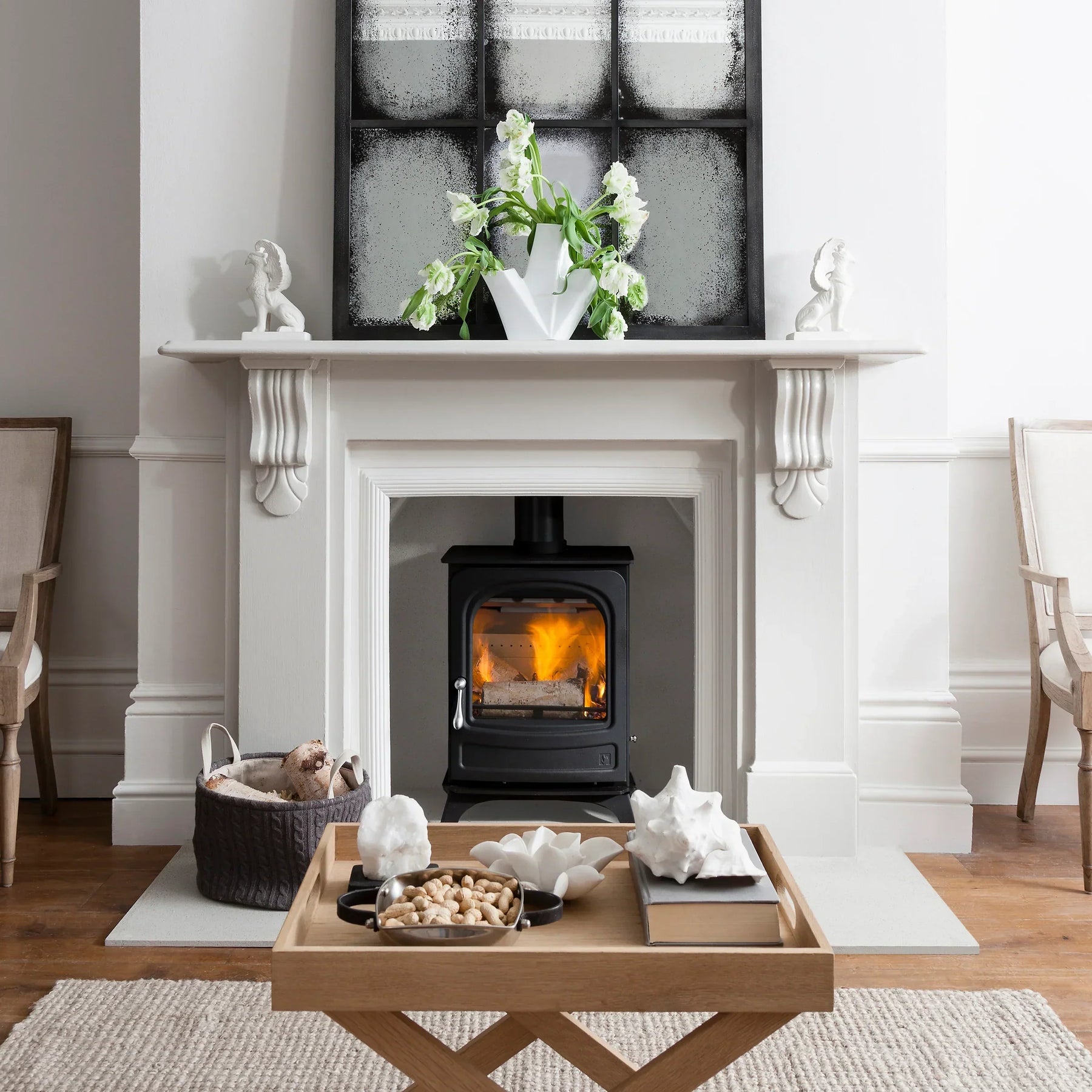0121 271 0221

Woodburner Smoke in Room: Why would a logburner create a smoky home?

If you’ve lit your woodburner and your room has suddenly filled with smoke, you're probably wondering what's going on. Fortunately, there are many simple reasons for woodburner smoke in the room — and they're easy to resolve.
Let's look at some of the top reasons why a log burner makes a smoky room.
Paint curing
Is your brand-new woodburner creating smoke in the room? If so, this influx of smoke is likely to be only a short-term issue.
The most common cause of smoke in your room from a new wood-burning stove is that the paint is curing. On all woodburners, the stove paint used to finish the appliances isn’t correctly finished until it has been subjected to the intense heat of a fire at least once (and often three or four times).
The curing process often causes a bad smell, which is sometimes accompanied by smoke coming from the woodburner.
How do I know if smoke from a woodburner is due to paint curing?
If paint curing is the cause of the smoke in your home, it will be an acrid-smelling and fog-like smoke. Obviously, you will want to open some windows and get this smoke out of your home as quickly as possible.
If the smoke is from paint curing, it will gradually settle once the stove has been used a few times. At this stage, there will no longer be woodburner smoke in the room.
If you’re lighting the woodburner for a fifth time and there’s still smoke seeping into your home, that would suggest you need to investigate other possible causes of woodburner smoke in the room.
Poor draw or downdraught
Another cause of woodburner smoke in the room is that the draw of your woodburner flue is not strong enough. This results in the smoke lingering in the firebox and ultimately seeping into the room through the air vents. There are several possible reasons for this, which include:
Downdraught
This can happen if your property is in an exposed location, your flue is quite short in length, or there are particularly windy conditions outside. In these cases, the pull of air down the flue becomes stronger than the pull in the opposite direction. This can be prevented by choosing specialist anti-downdraught or rotating chimney cowls.

Weak or slumbering fire
A weak or slumbering fire is the result of not adding enough fuel or not allowing enough oxygen into the stove through the air vents. You can easily check if this is the case by going outside and seeing if you can see smoke coming from your chimney. Only the slightest wisps of smoke will be visible if your stove is operating efficiently.
A stove pipe thermometer will also tell you if you're operating the stove at too low a temperature.
If your stove is creating too much smoke and burning too low, some of the smoke sits and can start to fill the room with smoke from your woodburner.
Burning damp fuel
Burning wood that is not properly dried and seasoned can cause logburner smoke to get into the room. This is due to similar reasons as we discussed in relation to a weak and slumbering fire.
Your stove is forced to waste energy evaporating moisture. This causes an inefficient burn, which in turn leads to a lot of smoke being created and not being pulled up the flue. Once a large amount of smoke is sitting, some of it will inevitably make its way through the air vents and into the room.
Broken seal
Log burner smoke in your room could be caused by a broken seal around the stove glass or door. This happens when the stove rope becomes frayed or squashed. Once the seal is not intact, smoke may seep out into the room. This can be easily resolved by replacing the stove rope.
Installation problems
If none of the reasons for woodburner smoke in your room apply to your stove, another possibility is that there is a problem with your log burner installation. In this case, the most like causes are:
- Manufacturing faults - A crack or gap in the stove body.
- Installation errors - Something was not fitted or sealed correctly on the flue system.
- Flue terminal problems - The flue terminal isn't high enough to create sufficient draw.
- Lack of ventilation - There aren't enough air vents or other forms of ventilation in the room.
If your woodburner is newly installed, your stove installer will check and, if necessary, correct any problems.
For longer-term cracks and gaps in the stove system, you can often use fire cement to repair the damage.
Staying safe with smoke from a woodburner
Remember: a carbon monoxide alarm is a legal requirement of all woodburner installations and, if you’re experiencing the problems discussed in this article, will keep you safe. A carbon monoxide alarm will warn you about any dangerous flue gases seeping into your room from the woodburner.

